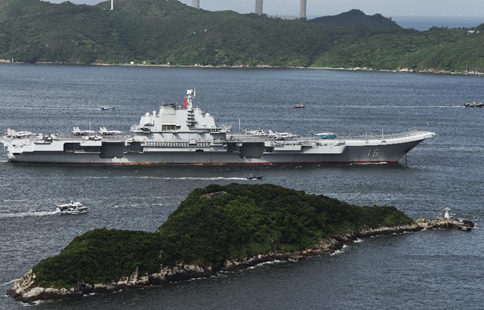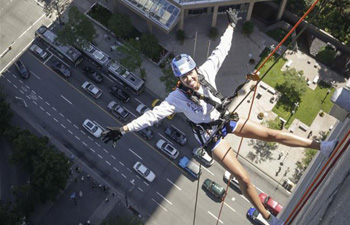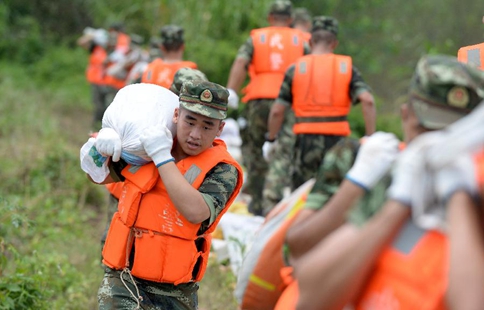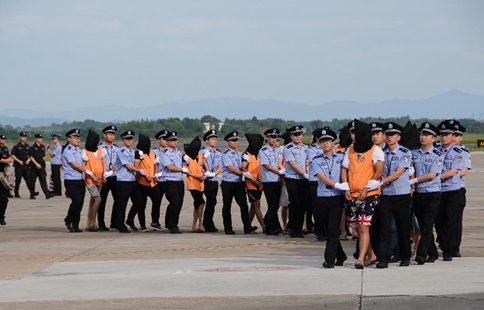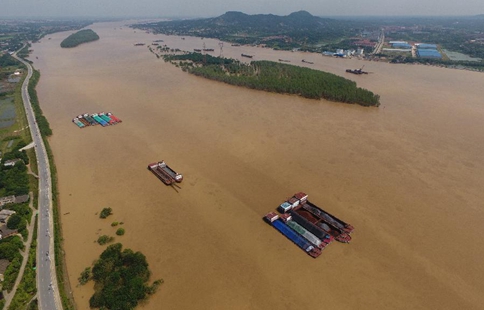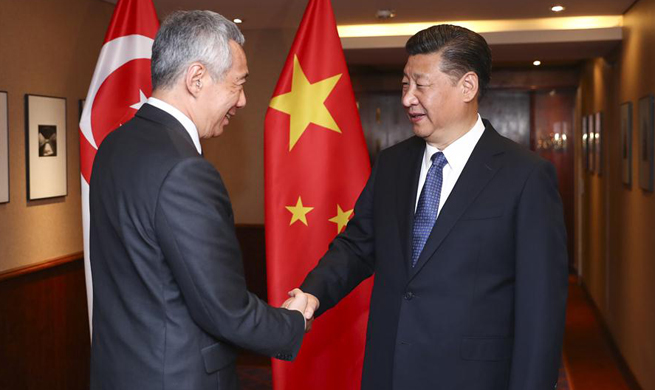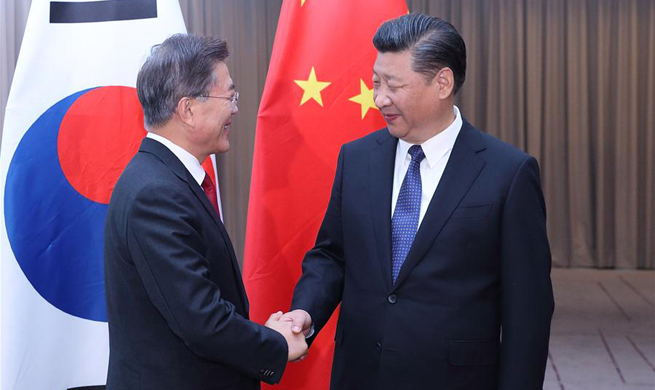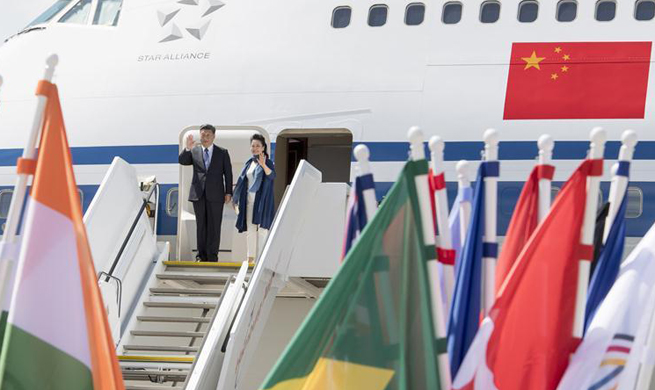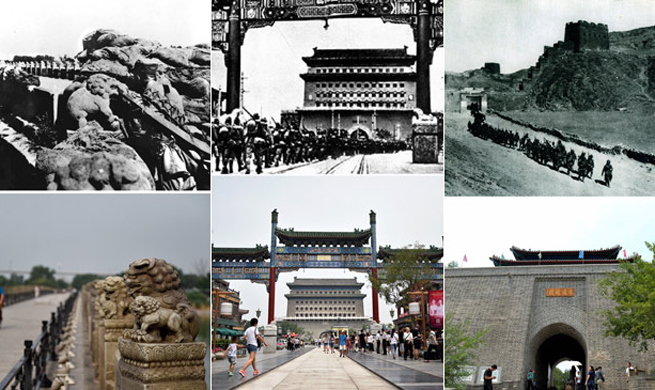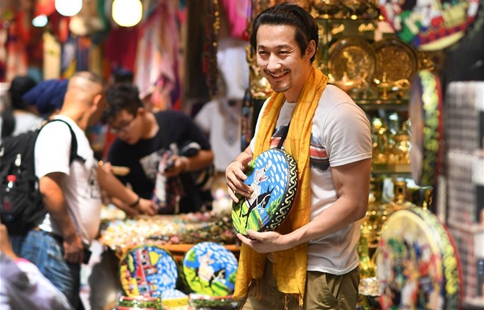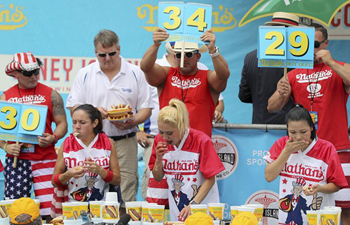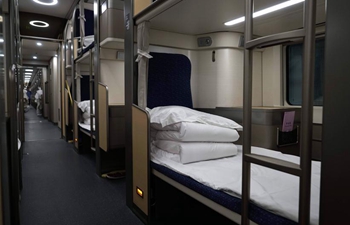THE LAST FLYING TIGERS
More than seven decades have passed since almost 300 Flying Tigers arrived in China and wrote a legendary chapter of China-U.S. friendship.
Now, most of them had already perished -- not in battle -- but of old age.
There are only two survivors today -- squadron crew chief Frank Losonsky and the last surviving Flying Tiger pilot, Carl Brown. Armorer Charles Baisden passed away this February.
Losonsky was both a pilot and mechanic specialist when he came to Asia in 1941 at the age of 21. He worked as the youngest crew chief with the Flying Tigers, responsible for maintaining the shark-mouthed P-40 fighters.
"I love Chinese people. They have a clear heart," Losonsky told Xinhua. "It was dangerous in China, but I was happy to be there."
Losonsky, after returning to the United States, served at General Motors and later operated three restaurants and a catering service. He also worked with his son Terry to publish his wartime diary.
Since the end of WWII, Losonsky never managed to climb back into a P-40, but his wish was finally fulfilled last year. During the Flying Tigers reunion in Atlanta in 2016, Losonsky was offered a ride inside a P-40, which made two barrel rolls in the sky.
"I felt OK. No problem at all," Losonsky said.
Another wish he had was to step back on Chinese soil again. In 2015, he was invited to visit China for the V-Day parade in Beijing. In Kunming, he was named as an honorary citizen.
"China has changed so fast and so much," Losonsky told Xinhua, adding that the places where he lived in the 1940s were now unrecognizable.
"I am extremely excited about the progress China has made," Losonsky told Xinhua. "I am sorry for the atrocities caused by the Japanese back then. Chinese people were resolute in defeating the Japanese. "
Brown attended Michigan State University until 1939 when he suspended his studies to join the U.S. Navy. During his training in Florida, Brown became one of only a few pilots who could land the planes on aircraft carrier at night.
In 1941, through introduction of his friend Tex Hill, who would become one of the major AVG ace pilots, Brown signed up for the AVG and was honorably discharged from the Navy.
"Most of these pilots were just two to three years out of high school," Brown recalled.
"In 1941 in Burma the alert status was especially high. There was a rather heart-pounding experience; we had never employed a P-40 at night," said Brown at his residence in California.
One night when Brown's squadron was guarding the Burma Road, noises of trucks echoed around and sounded like a squadron of bombers with the engines not synchronized.
"So we had our big bomb alert and everybody took off because of the truck noises," Brown said.
But during war it was not always a false alarm. During a mission in May 1942, one of his fellow pilot's plane exploded just nearby his wing, said Brown. "I was thankful to have gotten back after that tragic encounter."
After the AVG disbanded, Brown spent three months training Chinese pilots before becoming a pilot for CNAC. In total, Brown clocked in excess of 1,000 hours over the Hump. He also flew airships from New Jersey across the Atlantic to West Africa and then to India at least three times.
In 1945 he returned to the United States, resumed his undergraduate studies and graduated in 1946. He went on to receive his M.D. and J.D. degrees respectively in the 1950s and 1980s.
For Brown, the horrors of WWII illustrate how desperately the world needs non-violent solutions to interpersonal conflicts, and according to him, it is in this spirit of peaceful resolution that he pursued his degrees.
Brown will celebrate his centennial birthday in December this year.
KEEPING MEMORIES ALIVE
"I was glad to serve the Chinese people," Jay Vinyard told Xinhua.
Vinyard joined the U.S. Army Air Forces in 1942. In 1944, he was assigned to fly the Hump, ultimately completing 87 successful missions. Prior to the V-Day parade in Beijing in 2015, President Xi Jinping awarded Vinyard a medal for his service.
"With several other WWII veterans, I was seated on the same level with President Xi to watch the parade," Vinyard said. "I am deeply impressed by what China has been achieving."
It is clear now, all these years later, that contribution of the pilots was not made in vain.
"The Chinese people and the American people can work together to make the world a better place," Vinyard said.
"China's role in the allied victory of WWII was instrumental," Losonsky added.
Though Chinese contributions to WWII have often been undervalued, more and more people are pointing out the huge sacrifices that were made and that they will not be forgotten.
"Memories of WWII have faded," said Rana Mitter, professor of history and director of the China Center at the University of Oxford. "But let's not forget that China held off Japanese forces. If China had surrendered, WWII would have ended differently."




